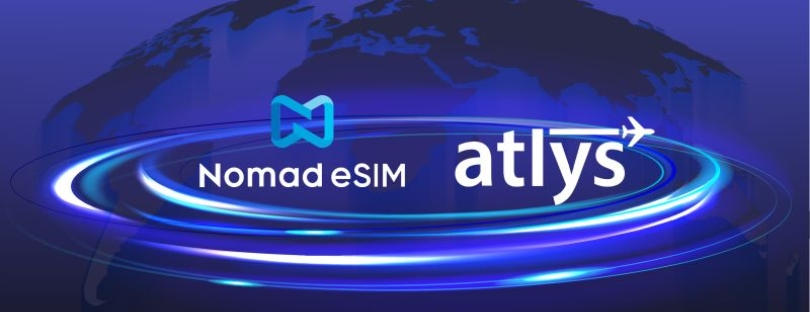
Apple’s Boldest Move Yet: iPhone Air Goes eSIM-Only in Europe
Apple has never shied away from bold moves. From removing the headphone jack on the iPhone 7 to ditching the charging adapter in the box with the iPhone 12, the company has often set the tone for what the rest of the mobile industry eventually follows. Now, in 2025, Apple is doing it again — this time with mobile connectivity. With the launch of the new iPhone Air, unveiled at its September keynote, Apple has confirmed that the device will be exclusively eSIM-only in Europe, eliminating the traditional physical SIM card slot entirely.
This marks a pivotal shift in how millions of European iPhone users will connect their devices to mobile networks. While eSIM technology has been available on iPhones for several years, its adoption has been gradual, often slowed by uneven carrier support and traveler habits that still rely on swapping plastic SIM cards. The iPhone Air changes that dynamic completely, forcing the European market to accelerate into the eSIM era.
What Is the iPhone Air?
The iPhone Air is Apple’s thinnest smartphone to date, measuring just 5.6 mm thick — slimmer even than the iPod touch of years past. Despite its ultra-slim design, it packs premium hardware: the A19 Pro chip, a new C1X modem supporting Wi-Fi 7, Bluetooth 6, and Thread, plus a brilliant 6.5-inch ProMotion display that peaks at 3,000 nits. The device represents a fusion of high-end performance and minimalist engineering, and the removal of the SIM tray is a key reason Apple was able to achieve such a sleek form factor.
Why Apple Is Going eSIM-Only
The decision to make the iPhone Air eSIM-only in Europe (and in fact, globally) isn’t just about aesthetics. It’s part of a larger strategy:
- Space efficiency – Removing the SIM slot frees up valuable internal space, making room for a larger battery inside the Air’s ultra-slim frame.
- Global digitalization—Apple has been laying the groundwork for a full eSIM transition since the iPhone 14 went eSIM-only in the U.S. in 2022. The iPhone Air expands this vision to Europe.
- Security – An embedded SIM cannot be physically removed, making the device harder to resell if stolen and adding another layer of protection for users.
- Convenience for travelers—eSIMs can store multiple carrier profiles (up to eight), enabling seamless switching between networks, which is especially beneficial for frequent travelers.
What It Means for European Users
For consumers, the immediate reality is simple: if you buy an iPhone Air in Europe, you will need an eSIM plan from a carrier that supports the technology. Physical SIM cards will no longer work, period. This could initially feel restrictive for users accustomed to popping in a prepaid SIM while traveling abroad.
However, the timing is not accidental. European carriers have rapidly expanded eSIM support over the past three years, and Apple has been working closely with operators to ensure readiness. Many providers across the EU already offer instant eSIM activation via QR codes or apps, and Apple Stores are preparing to assist customers in migrating smoothly.
This move also puts pressure on smaller and budget operators who have been slow to adopt eSIM — a clear message that the era of physical SIM cards is winding down faster than expected.
The Bigger Picture
It’s worth noting that while the iPhone Air is eSIM-only, the rest of the iPhone 17 lineup still retains physical SIM support in many regions. This suggests that Apple is using the Air as a testing ground for a wider rollout. If adoption goes smoothly in Europe, the next step may be making all iPhone models eSIM-only within just a generation or two.
Conclusion
With the iPhone Air, Apple has done what it does best: forcing the market forward rather than waiting for consensus. While Samsung and Google still hedge their bets by offering both eSIM and physical SIM in their flagships, Apple has drawn a line in the sand — and in Europe, no less, where carrier readiness is uneven. According to GSMA Intelligence, fewer than one in three European mobile users had adopted eSIM by 2024, a gap that Apple is now effectively obligating the industry to close.
The real intrigue lies in the ripple effect. Travel SIM vendors, MVNOs, and even legacy telecoms will either adapt their onboarding processes to frictionless digital activations or risk being sidelined. And once Apple makes a move, others rarely stay behind for long. The iPhone Air could be remembered less as the world’s thinnest iPhone and more as the device that killed the SIM card in Europe.
- AIRALO
-
eSIM for
Europe
39 countries
-
1 GB – 7 days – €4.27
3 GB – 30 days – €11.09
10 GB – 30 days – €31.57
- AIRHUB
-
eSIM for
Europe
34 countries
-
1 GB – 7 days – €2.99
3 GB – 30 days – €5.12
10 GB – 30 days – €11-09
- aloSIM
-
eSIM for
Europe
32 countries
-
1 GB – 7 days – €5.00
3 GB – 30 days – €13.00
10 GB – 30 days- €36.00
- GigSky
-
eSIM for
Europe
36 countries
-
1 GB – 7 days – €6.99
3 GB – 15 days – €11.19
10 GB – 30 days – €27.99
- iRoamly
-
eSIM for
Europe
39 countries
-
1 GB – 7 day – €6.83
3 GB – 15 days – €10.24
10 GB – 30 days – €18.77
- Maya Mobile
-
eSIM for
Europe
34 countries
-
1 GB – 7 days – –
5 GB – 15 days – €5.99
10 GB – 30 days- €13.99
- NOMAD
-
eSIM for
Europe
36 countries
-
1 GB – 7 days – €4.71
3 GB – 15 days – €10.27
10 GB – 30 days – €15.41
- UBIGI
-
eSIM for
Europe
29 countries
-
500 MB – 1 day – €2.00
3 GB – 30 days – €8.00
10 GB – 30 days – €19.00
- VOIA
-
eSIM for
Europe
34 countries
-
1 GB – 7 days – €2.69
3 GB – 15 days – €5.05
10 GB – 30 days- €11.70
The Best eSIM Finder brings together 100+ providers in one place, giving you a clear view of everything from data limits and business options to tethering, crypto payments, coverage, travel extras, refund policies, discounts, and reviews—so you don’t just compare plans, you understand which one truly fits your needs. Start exploring today and find the plan that fits you best.




















